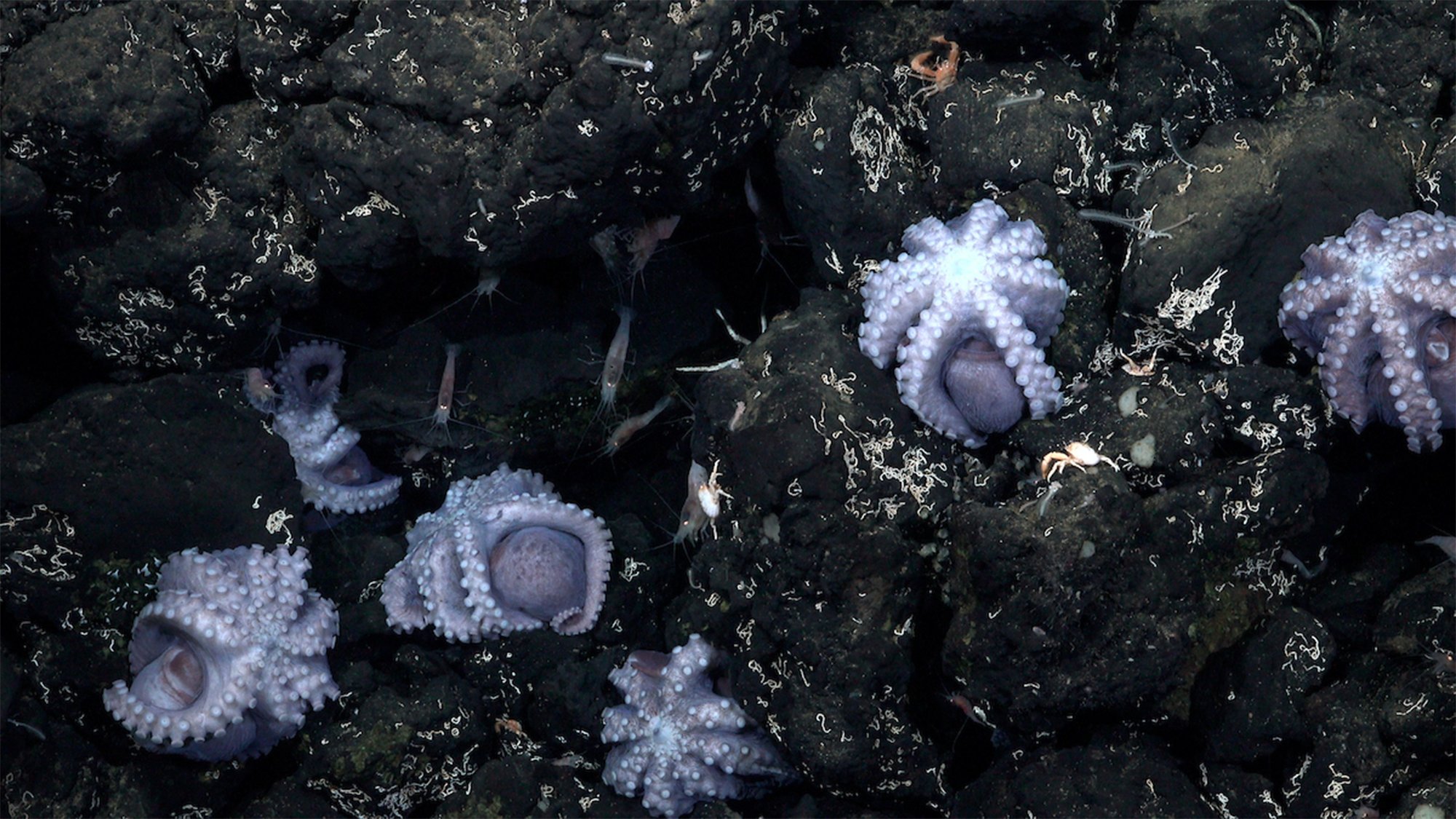

Forget Baby Shark—this summer’s marine darling is the baby octopus. Scientists working off the coast of Costa Rica say they’ve confirmed the location of the world’s third known octopus nursery and possibly a new species of the eight legged cephalopod. If confirmed, the new species would belong to Muusoctopus, a genus of small to medium sized octopus that do not not have ink sacs.
[Related: Female octopuses will chuck seashells at males who irk them.]
This deep-sea octopus nursery is located in a low-temperature hydrothermal vent in the Dorado Outcrop offshore of Costa Rica. The nursery was initially discovered in 2013 and was the first observation of a female octopus gathering together to brood or incubate their eggs. When the scientists didn’t see any developing embryos when the site was first explored, scientists believed that the Dorado Outcrop may not support octopus growth.
According to the Schmidt Ocean Institute, the team watched the Muusoctopus species hatch during their work, disproving the idea that this area of the deep sea is inhospitable for developing octopus young. The Schmidt Ocean Institute is a nonprofit research organization that was founded in 2009 by former Google CEO Eric Schmidt and his wife Wendy.
The team of 18 scientists from all over the world also explored five never-before-seen seamounts in the northwestern corner of Costa Rica’s waters. These undersea giants are teeming with thriving biodiversity—some of which are suspected to be new species.

These seamounts are currently not protected from human activities like fishing, and many local scientists are working to determine if this area should become a designated marine protected area.
“This expedition to the Pacific deep waters of Costa Rica has been a superb opportunity for us to get to know our own country,” University of Costa Rica marine biologist Jorge Cortes said in a statement. “The expedition had a significant number of local scientists and students which will accelerate our capacity to study deep regions. The information, samples, and images are important to Costa Rica to show its richness and will be used for scientific studies, and outreach to raise awareness of what we have and why we should protect it.”
The team used an underwater robot called a remotely operated vehicle (ROV) to observe the vents and new octopuses. These kinds of submersibles are valuable for conducting deep-sea expeditions like the ones that discovered the wreckage of the RMS Titanic in 1985.
[Related: Scientists Freak Out Over Newly Discovered Hydrothermal Vents.]
“The discovery of a new active octopus nursery over 2,800 meters [9186 feet] beneath the sea surface in Costa Rican waters proves there is still so much to learn about our Ocean,” Schmidt Ocean Institute Executive Director Jyotika Virmani said in a statement. “The deep-sea off Costa Rica rides the edge of human imagination, with spectacular footage collected by ROV SuBastian of tripod fish, octopus hatchlings, and coral gardens. We look forward to continuing to help the world witness and study the wonders of our incredible Ocean.”
